January 5, 2012?I had an epiphany while watching McLain Ward’s lessons today at the 2012 George Morris Horsemastership Training Session. He got after several of the riders for planting their hands on their horses’ necks, getting up on their toes with their hips in front of the saddle pommel and losing their legs to the rear. If you’re a regular reader of George’s monthly Jumping Clinic column in our magazine, you’ll know the more common term for this is “jumping ahead.”
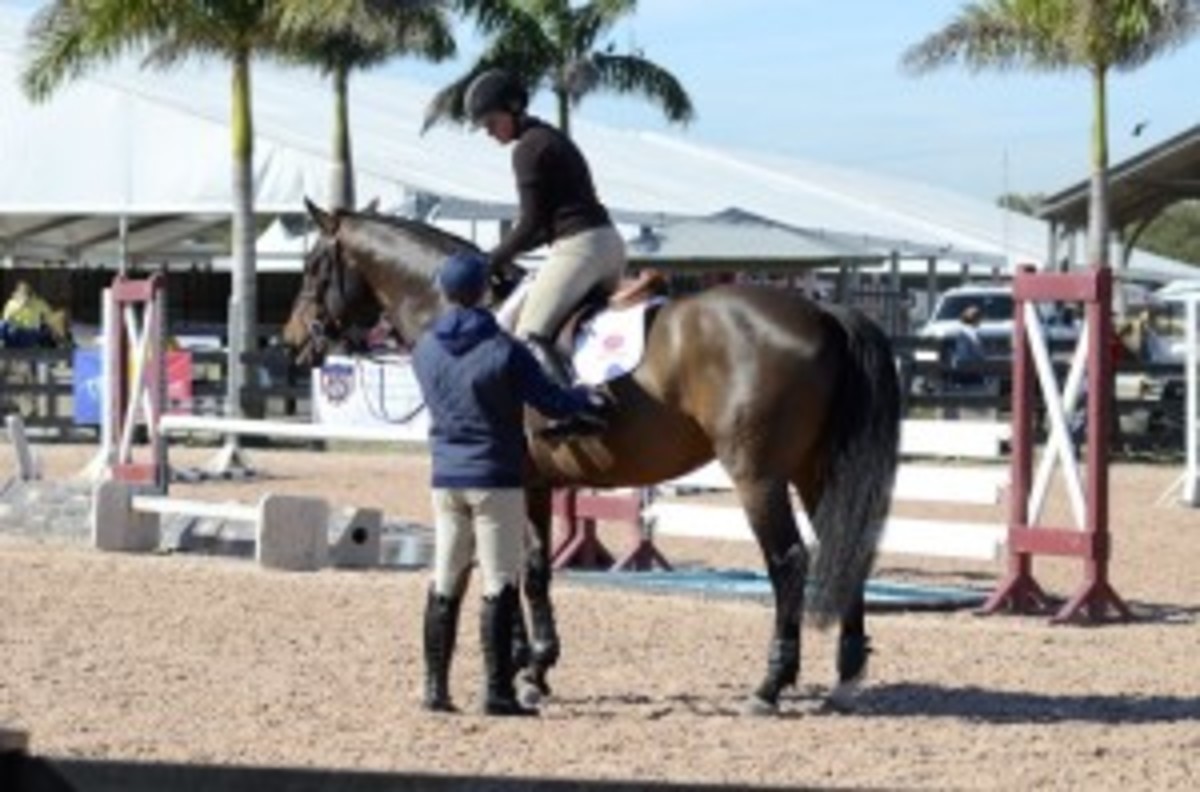
McLain, who was filling in for George, who is still under the weather, told the riders, “If you get ahead of the horse, you lose your lower leg to the back. You lose the connection to the horse’s hind legs, which is his power.” This translates to sticky jumps, particularly when they get higher and wider. He also explained that while it’s important for riders to be able to perform every kind of release, including the automatic release that George regularly prescribes for more advanced riders, he still prefers to use the crest release because he finds it helps him with the recovery after the jumps. He did tell the riders that if they prefer to use the automatic release that they need to be careful not to slide their hands down their horses’ withers because that drops the upper body, which loads their horses’ front ends and encourages them to get ahead of their horses. While my abilities pale in comparison to these riders’, this advice will help me solve the biggest problem in my riding, since I have a major jumping-ahead habit.
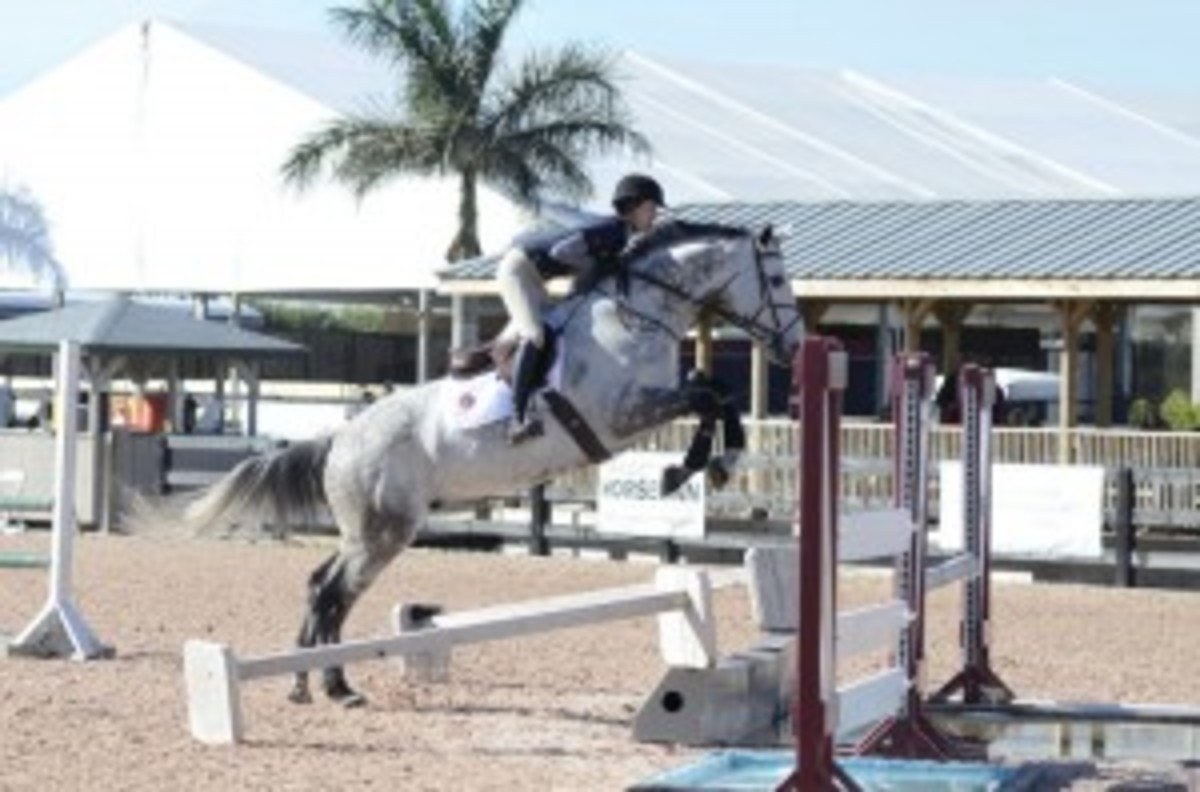
As each rider tackled today’s exercises, McLain encouraged them to be patient and allow the jumps to come to them and also allow their horses to jump up through their chests–not drop their chests to the withers. Like the previous two days, the word “discipline” came up again and again. He explained that the riders’ goal is to do the same thing at every fence–to be consistent in their positions no matter what their horses are doing. In addition, he reminded the riders to not lean ahead the last few strides before the jump but instead to sit into their horses and put their legs on to maintain the connection with the horses’ hind legs. This also helps a horse who tends to get wishy-washy to fences.
Another position fix was for riders to keep their thumbs up. He explained that flat hands equal stiff arms and locked elbows. The habit also encourages the riders to “get over their hands,” which in turn causes them to jump ahead, continuing the cycle. While I’m on the subject of hands, another great tip McLain had for the riders with horses with high head carriages was that instead of burying their hands into their horses’ necks to try to “pull” the head down, they should instead lift their hands toward their belly buttons. This allows the horse to drop his head by maintaining a consistent connection. “Worry less about the horse’s head position than creating power from behind.” All of this advice would be critical to heed at the end of each session when the riders tackled the water jump.
Today’s session was scheduled as “flatwork and gymnastics,” but McLain instead chose to do coursework and, of course, the aforementioned water jump. This was because he said his gymnastics program is very similar to what the riders did yesterday with Kent Farrington. After warming up at the flat and over some serpentine lines varying the striding between fences, McLain eventually put all of the parts together. Riders cantered over a large crossrail around to a vertical, inside turn to an oxer, around the corner to an oxer off the right lead, bending line in seven strides to the liverpool, bending line in seven strides to a natural oxer then a left turn to the water jump.
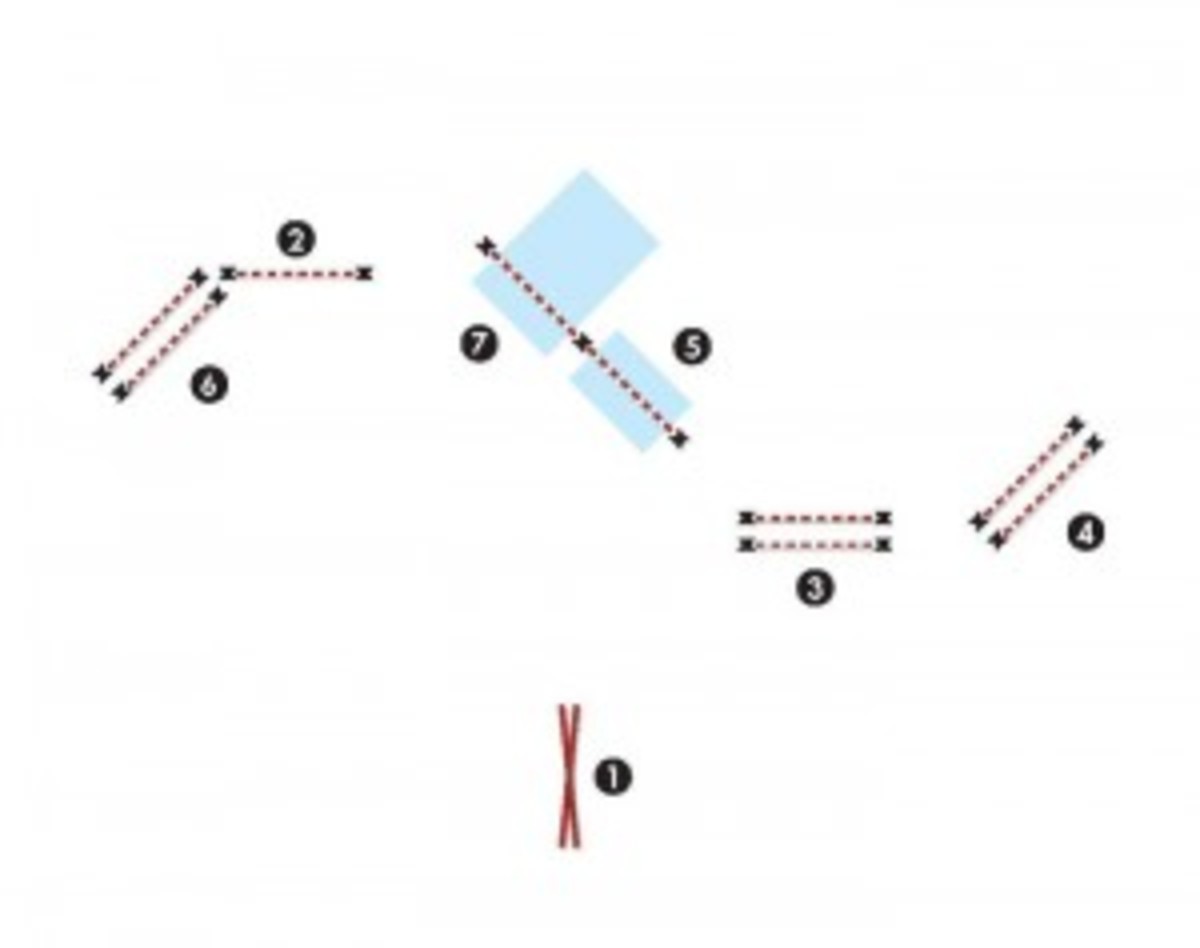
McLain believes in making the introduction of “natural fences” easy for the horse. To help horses and riders, he used a low “stone” wall just inside the perimeter of the water with cavalletti set diagonally to create a chute. As the riders came off of fence 6, McLain encouraged them to develop impulsion and take a feel of the horses’ mouths. One rider started leaning at the water and allowing her horse to look down. McLain told her to sit deep to create power from behind and lift her hands to keep the horse from looking down at the water. All the horses cleared the water easily several times, and the riders became more confident once they tweaked their positions.
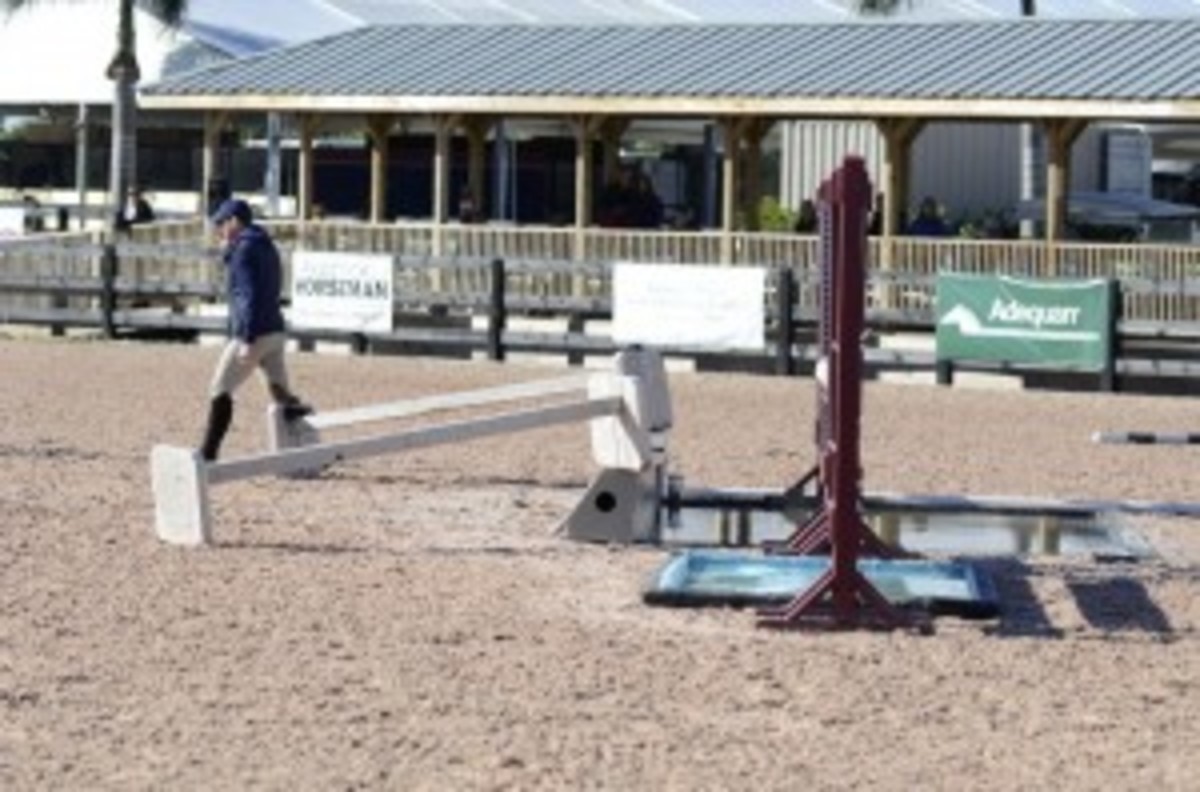
McLain finished the day’s session by telling the riders that they need to be disciplined and practice correctly even at simple fences. Otherwise, it will come back to bite them later when they NEED to do it correctly when it counts.
Allyn Mann, Adequan: Joint Health
Riders then had the opportunity to attend a presentation on joint health by Allyn Mann of Adequan, one of the training session sponsors. The audience came away with a good understanding of how a healthy joint works and what happens when damage begins.
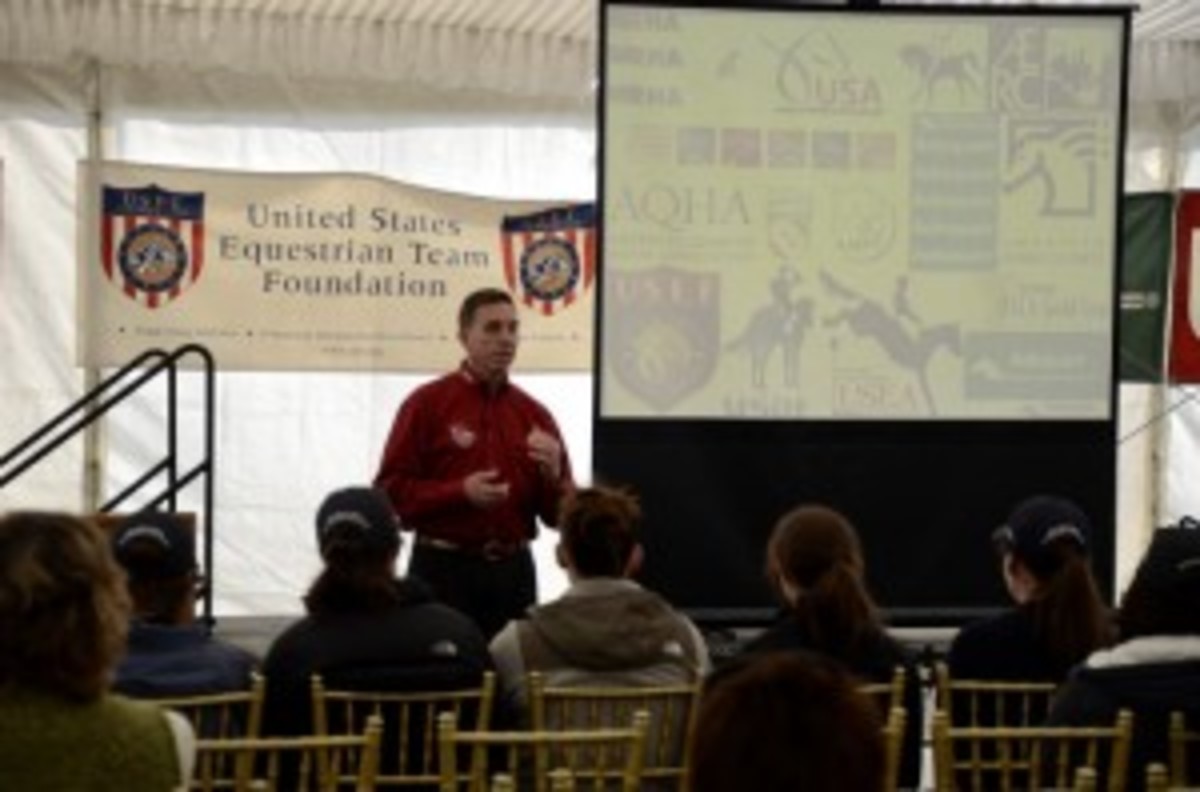
Joint health comes from good conformation. In a balanced joint, cells regenerate and repair damaged cartilage, and synovial fluid is replaced. Joint injuries are impacted by breeding, feeding, shoeing, training and management. Poor conformation creates overloading of the defect. Problems down the road are a given.
The synovial membrane in the joint acts like a gatekeeper, keeping out anything that shouldn’t be in the joint. When there is trauma, the horse experiences mild pain and inflammation. Destructive enzymes breach the synovial membrane and attack the hyaluronic acid in the joint, which is the main component of joint fluid. This is synovitis–inflammation of the synovial membrane. The joint begins to break down, and cartilage is unable to repair.
Cartilage is not a shock absorber in the joint as was once thought–the underlying subchondral bone is the shock absorber. Cartilage absorbs forces and disperses them evenly along the subchondral bone. Once cartilage reaches a certain point of damage, it can’t be repaired. Cartilage has no pain receptors (though there are nerves in subchondral bone), so there’s no easy way to know when joint damage has started (i.e., there’s no pain or inflammation). The best way to know is to become very familiar with each horse and pick up subtle problems starting.
Tomorrow, Beezie Madden will school the riders in flatwork without stirrups while veterinarian Dr. Tim Ober offers his observations on the horses’ movement and what riders can do to help those deficiencies through training.
For more coverage of the 2012 George H. Morris Training Session, see our reports from Day 1 and Day 2.
The 2012 George H. Morris Horsemastership Training Session, presented by the US Hunter Jumper Association and Adequan, is being held at the Palm Beach International Equestrian Center in Wellington, Florida, Jan. 3-7. Twelve young riders are participating in the sixth annual training session sponsored by Practical Horseman, The Dutta Corporation, Farnam and Equestrian Sport Productions. The training session includes mounted lessons as well as educational sessions on stable management, veterinary care and nutrition.
Auditing the mounted and educational sessions is free and open to the public. There is live streaming of the mounted sessions at www.USEFNetwork.com, where there are also updated broadcast and auditor’s schedules. Unmounted sessions that are open to the public will be available for viewing each evening.
For Practical Horseman’s coverage of previous years’ training sessions, click here.










